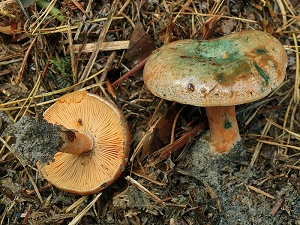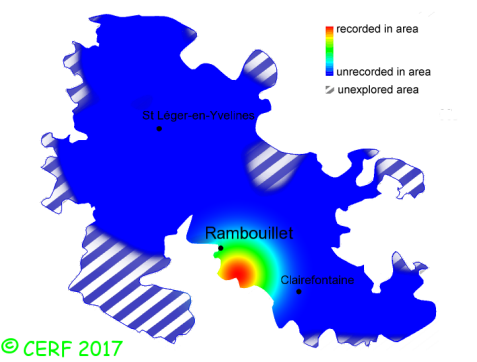| Lactarius semisanguifluus R. Heim & Leclair |
|
|
|
|
|
|
The cap is flesh pink to orange, in concentric bands, staining green, convex then depressed; its margin is inrolled. The cap surface is sticky when damp. The stem is paler than the cap, with no or few blotches, without ring. The flesh is orange, turning vinaceous red in a few minutes when exposed to air, then green a long time after; its taste is mild to not very bitter or slightly hot; the odour is faint, of washing powder or fruity-sweet; its texture is grainy (breaking like a chalk stick), exuding when cut a carrot-orange milk, turning red. The gills are salmon pink to red orange, turning green from the edge, adnate to decurrent, crowded . The spore print is white. This species is mycorrhizal. It grows on the ground, on a rather calcareous soil, exclusively under pine. The fruiting period takes place from July to December.
Distinctive features : orange cap, turning green; stem with a few or no blotches at all; carrot-orange milk turning blood-red then red-wine in a few minutes, then turning green eventually when exposed to air; with Scots pines Lactarius semisanguifluus is quite rare and confined in the forest of Rambouillet, and is quite rare, more generally speaking . | ||
|
page updated on 14/01/18

